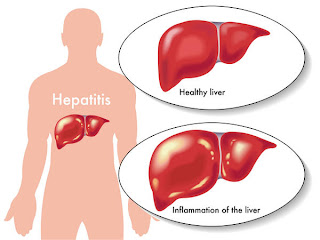NCP Edema - Fluid Volume Excess NIC NOC
 Definition: increased isotonic fluid retention
Definition: increased isotonic fluid retentionDefining characteristics:
- Body weight increased in a short time
- Excessive intake than output
- Altered blood pressure, pulmonary artery pressure changes, increased CVP
- Jugular venous distention
- Changes in breathing pattern, dyspnoe / shortness of breath, orthopnoe, abnormal breath sounds (Rales or crackles), pulmonary congestion, pleural effusion
- Decreased hemoglobin and hematocrit, electrolyte changes, particularly changes in density
- Heart sound SIII
- Reflex positive hepatojugular
- Oliguria, azotemia
- Mental position changes, nervousness, anxiety
Related Factor:
- Weak regulatory mechanisms
- Excessive fluid intake
- Excessive sodium intake
NOC Labels:
- Electrolit and acid base balance
- Fluid balance
- Hydration
Expected outcomes:
- Free from edema, effusion, anasarca
- The sound of breathing clean, no dyspnea / orthopnea
- Free from jugular venous distention, reflexes hepatojugular (+)
- Maintaining central venous pressure, pulmonary capillary wedge pressure, cardiac output and vital sign within normal limits
- Free from fatigue, anxiety or confusion
- Explaining the excess fluid indicator
NIC:
Fluid management
- Weigh diapers / pads if needed
- Maintain a record of intake and output accurately
- Insert urinary catheter if necessary
- Monitor lab results that correspond to fluid retention (BUN, Hmt, urine osmolality)
- Hemodynamic Monitor position including CVP, MAP, PAP, and PCWP
- Monitor vital sign
- Monitor indications retention / excess fluid (cracles, CVP, edema, distended neck veins, ascites)
- Assess the location and size of edema
- Monitor the input of food / liquid and count daily calorie intake
- Monitor portion of nutrients
- Give diuretics as instructed
- Limit fluid intake on the state of dilution hyponatremia with serum Na less than 130 mEq / l
- Collaboration doctor if signs of excess fluid appears to deteriorate.
Fluid Monitoring
- Determine history of the number and type of fluid intake and elimination
- Determine the possible risk factors of fluid imbalance (Hyperthermia, diuretic therapy, renal disorders, heart failure, diaphoresis, liver dysfunction, etc.)
- Monitor weight
- Monitor serum and urine electrolytes
- Monitor serum and urine osmilalitas
- Monitor BP, HR, and RR
- Monitor blood pressure and orthostatic changes in heart rhythm
- Monitor invasive hemodynamic parameters
- Record intake and output accurately
- Monitor the neck distention, peripheral eodem and weight gain
- Give drugs that can increase urine output
- Monitor signs and symptoms of edema.







